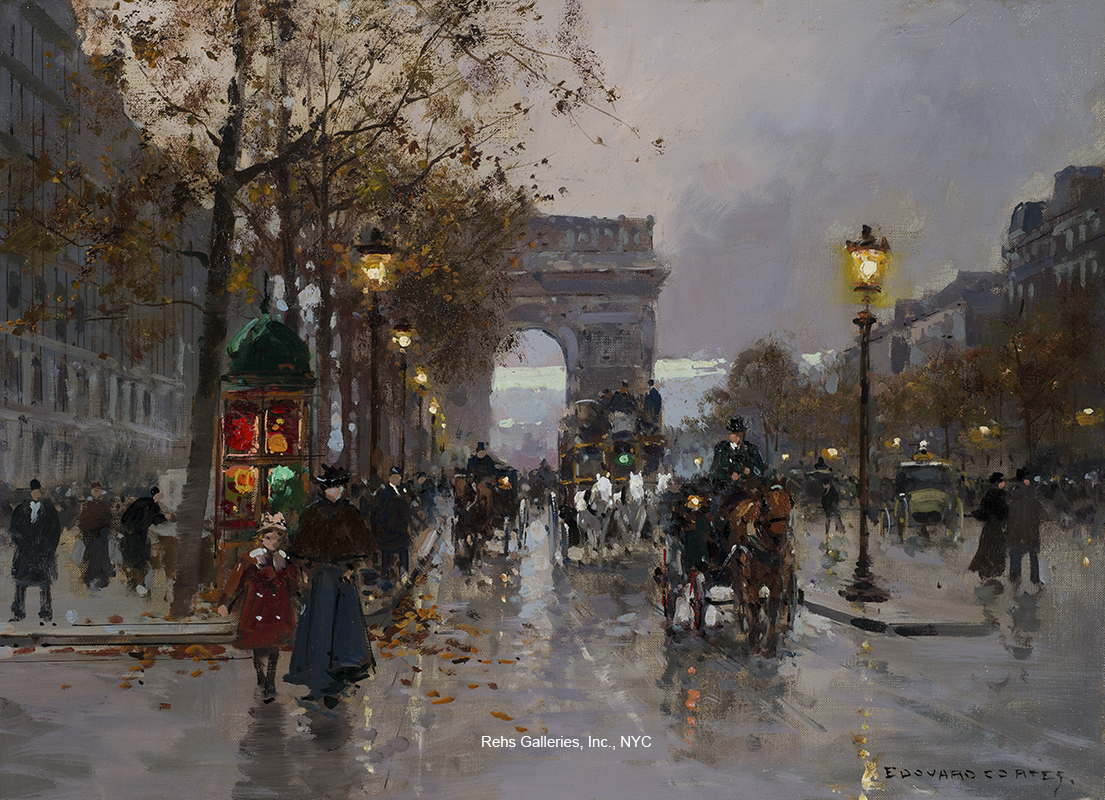Source: Arc de Triomphe – we are featuring another, rather unique, Paris street scene by the 20th century French artist Edouard Cortes (1882-1969) that just made its way to a new home.
The Arc de Triomphe, the most illustrious symbol of French national history, stands in the center of the Place Charles de Gaulle-Étoile, located at the top of the Champs-Élysées; twelve avenues radiate from the Place Charles de Gaulle-Étoile, giving it the appearance of a giant star (hence its original name, Place de l’Étoile). The layout is the masterpiece of 19th-century urban planner Baron Haussmann.
It is the second largest triumphal arch in the world, standing over 51 meters (165 feet) in height and 45 meters (148 feet) in width and was built to commemorate Napoléon Bonaparte’s many victories. At the top, you can watch Parisian life and gaze at the world famous views created by Parisian architects.
The Arc de Triomphe was commissioned in 1806 by Napoléon Bonaparte (1769-1821) to honor the French Grand army and was designed by Jean-François-Thérèse Chalgrin (1739-1811). After his death the project was taken over by L. Goust, Jean-Nicolas Huyot, and Guillaume-Abel Blouet successively, who brought the arch to completion in 1836 during the reign of Louis-Phillipe. An inscription by Blouet on the monument translates to, “This monument which was begun in 1806 to honor the great army, was left unfinished for many years, was continued in 1823 with a new purpose, and was completed in 1836 in the reign of King Louis-Philippe I who dedicated it to the glory of France’s armed forces. G. A. Blouet, architect.”
There are four enormous relief sculptures at the base of each of the four pillars that combine the commemorative with the symbolic. The sculptures are entitled The Triumph of 1810 (by Jean-Pierre Cortot), Resistance and Peace (both by Antoine Étex) and The Departure of the Volunteers, commonly known as La Marseilles (by François Rude).
In the attic above the ornately sculptured frieze of soldiers are 30 shields engraved with the names of major Revolutionary and Napoleonic military victories. The inside walls of the monument list the names of 558 French generals, with those who died in battle underlined, and a listing of lesser important victories.
Underneath the arch lies the tomb of the Unknown Soldier. At 6:30 every evening, the eternal flame is rekindled to commemorate the dead of both World War I and World War II.

